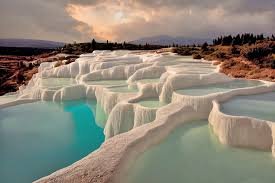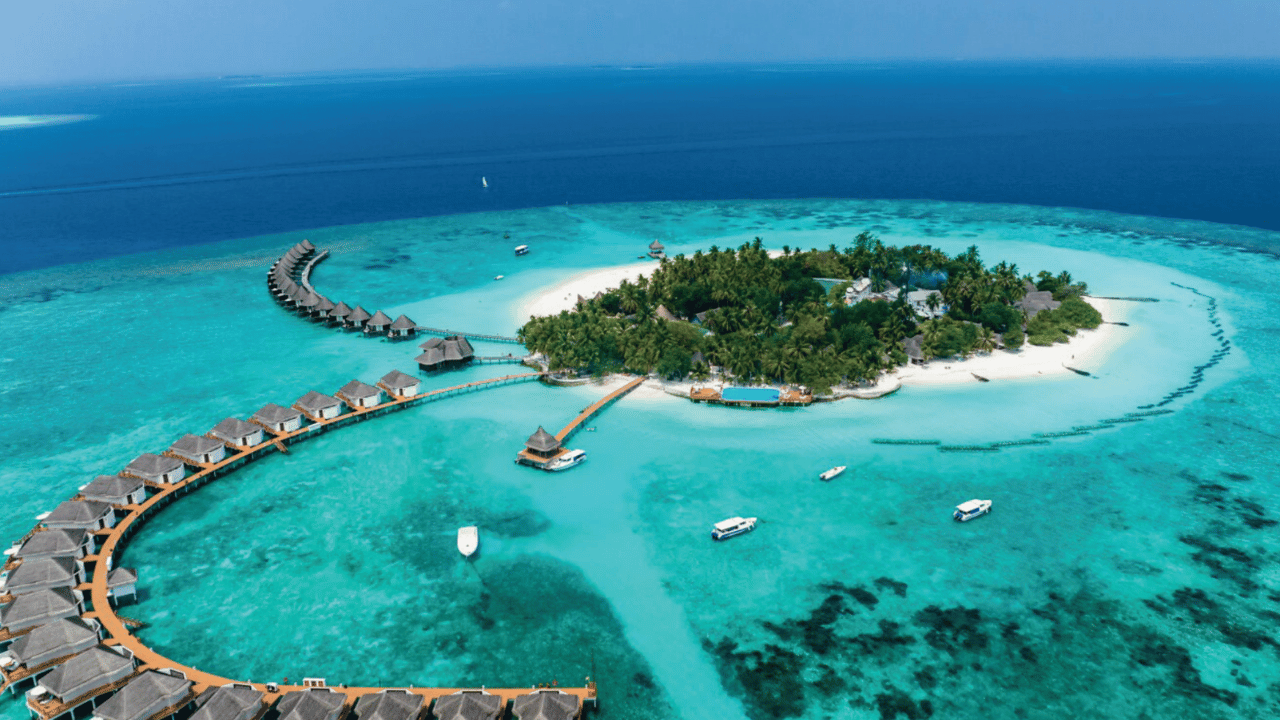The Great Barrier Reef: A Living Wonder of the Natural World
The Great Barrier Reef, stretching over 2,300 kilometers along the northeast coast of Australia, is the world’s largest coral reef system and one of Earth’s most extraordinary natural treasures. So vast it can be seen from space, this living structure is made up of over 2,900 individual reefs and 900 islands, offering an ecosystem so rich and diverse that it is often described as the rainforest of the sea.
Located in the Coral Sea, off the coast of Queensland, the Great Barrier Reef is one of the most visited marine attractions in the world and was designated a UNESCO World Heritage Site in 1981. It is home to an astounding variety of marine life, unique coral formations, and vibrant underwater landscapes that attract scientists, divers, and tourists from around the globe.
The Rich Biodiversity of the Reef
One of the primary reasons the Great Barrier Reef is so special is its incredible biodiversity. The reef supports:
- Over 1,500 species of fish
- Around 400 types of coral
- More than 130 species of sharks and rays
- 30 species of whales and dolphins
- 6 of the world’s 7 species of marine turtles
- Thousands of mollusks and other invertebrates
This vibrant underwater city is constantly teeming with life, where colorful clownfish dart between anemones, giant clams open and close gently on the seafloor, and majestic manta rays glide through crystal-clear waters.
Coral: The Building Block of the Reef
At the heart of the reef lies its coral, which might look like rock but is actually made up of tiny, living organisms called polyps. These polyps build calcium carbonate skeletons that form the structures of the reef. Corals thrive in warm, shallow, and clean waters, making the Coral Sea an ideal environment.
There are two main types of coral found here:
- Hard corals, which create the reef’s skeleton
- Soft corals, which sway like underwater plants but are animals too
The colors, shapes, and patterns of these corals create a mesmerizing underwater landscape that feels like an alien world.
A Snorkeler’s and Diver’s Paradise
One of the biggest draws of the Great Barrier Reef is the opportunity to snorkel or scuba dive among its vibrant marine life. Popular dive sites like Cod Hole, Ribbon Reefs, and Osprey Reef offer encounters with large potato cod, sea turtles, reef sharks, and massive coral bommies.
For those who prefer to stay above the surface, glass-bottom boat tours, semi-submersibles, and reef pontoons provide accessible options to explore the reef without getting wet.
The reef is also a popular spot for underwater photography, thanks to the clarity of its waters and the explosion of color beneath the surface.
Best Islands to Visit on the Reef
Many of the 900 islands of the Great Barrier Reef offer luxurious resorts, adventure activities, and nature escapes. Some top island destinations include:
- Whitsunday Islands: Famous for their white-sand beaches and sailing adventures
- Green Island: A coral cay close to Cairns with snorkeling and rainforest walks
- Heron Island: A nesting spot for turtles and seabirds, ideal for eco-tourism
- Lizard Island: An exclusive resort destination with some of the best diving spots
These islands provide a perfect blend of reef exploration and relaxing beach getaways.
Threats to the Reef
Despite its beauty, the Great Barrier Reef faces serious threats that could impact its future. The biggest concerns include:
- Coral Bleaching: Caused by rising sea temperatures due to climate change
- Pollution: Agricultural runoff and plastics damage coral health
- Overfishing: Disrupts the delicate balance of marine species
- Tourism Pressure: Unregulated activities can damage coral and marine life
To combat these issues, both governmental and non-profit organizations are working on conservation initiatives such as:
- Coral restoration projects
- Reducing carbon emissions
- Sustainable tourism guidelines
- Reef monitoring and research programs
Conservation Efforts and Hope for the Future
The Australian government, through the Great Barrier Reef Marine Park Authority (GBRMPA), has implemented strict regulations to protect the reef. Tourism operators also follow eco-certification standards, and local communities play a role in reef stewardship.
Innovative projects like coral gardening—where fragments of coral are grown in nurseries and transplanted back onto damaged reefs—are showing promising results. Additionally, awareness campaigns have helped reduce single-use plastics and promoted responsible reef behavior among visitors.
Cultural Significance to Indigenous Peoples
For the Aboriginal and Torres Strait Islander peoples, the Great Barrier Reef is much more than a tourist attraction—it is a sacred and spiritual place. Indigenous groups have lived along the Queensland coast for thousands of years and have a deep connection to the sea and reef, which they call “Sea Country.”
Many traditional practices, stories, and customs are tied to the reef and its marine life. Efforts are being made to involve Indigenous rangers in reef protection and to share their knowledge with visitors.
When to Visit the Great Barrier Reef
- Best Time to Visit: May to October, during the dry season, when the weather is warm and underwater visibility is high.
- How to Get There: The reef is accessible via cities like Cairns, Port Douglas, and Airlie Beach, which offer boat trips, cruises, and flights.
- Tour Types: Choose from half-day tours, full-day snorkeling trips, liveaboard diving experiences, or island stays.
Tips for Responsible Reef Travel
To help preserve this wonder for future generations, follow these sustainable travel practices:
- Avoid touching or stepping on corals
- Use reef-safe sunscreen
- Don’t feed or chase marine life
- Dispose of waste properly
- Support eco-certified tour operators
Even small actions can have a big impact when it comes to protecting the reef.
Final Thoughts
The Great Barrier Reef is not only a marine marvel but also a reminder of nature’s complexity and fragility. With its kaleidoscope of marine life, underwater adventures, and breathtaking scenery, the reef offers more than just a vacation—it provides an experience of deep wonder, education, and reflection.
Visiting the reef isn’t just about seeing something beautiful—it’s about appreciating one of Earth’s greatest gifts and becoming part of the global effort to protect it. Whether you’re diving among corals or simply watching the sunset over the Coral Sea, the Great Barrier Reef will leave you with memories and a deeper respect for our natural world.


